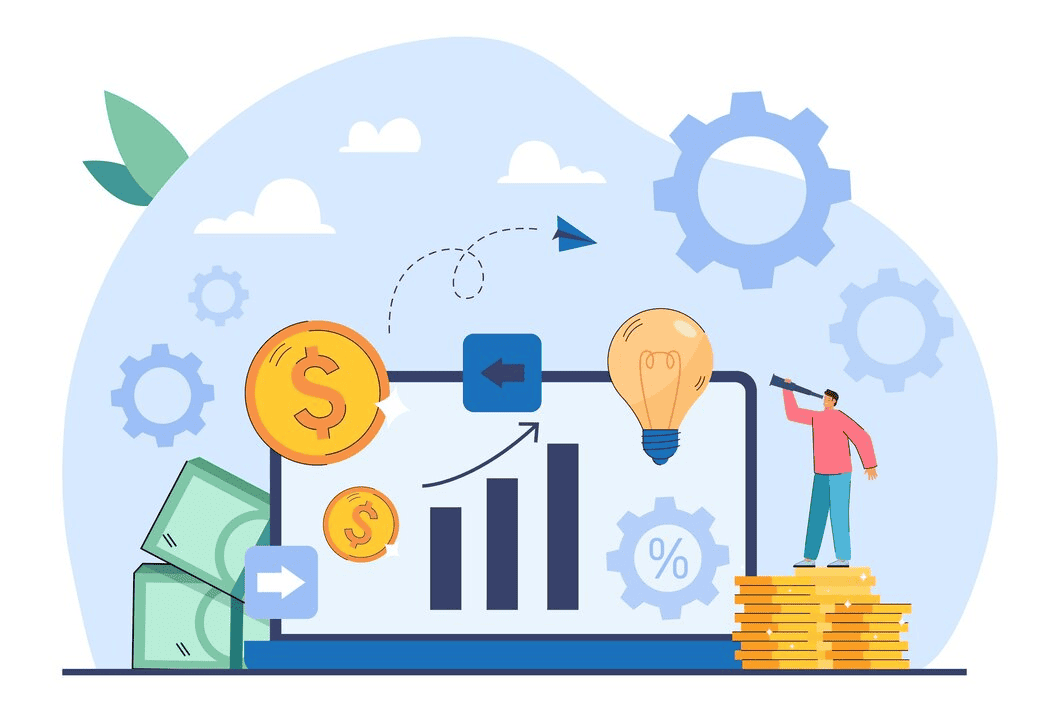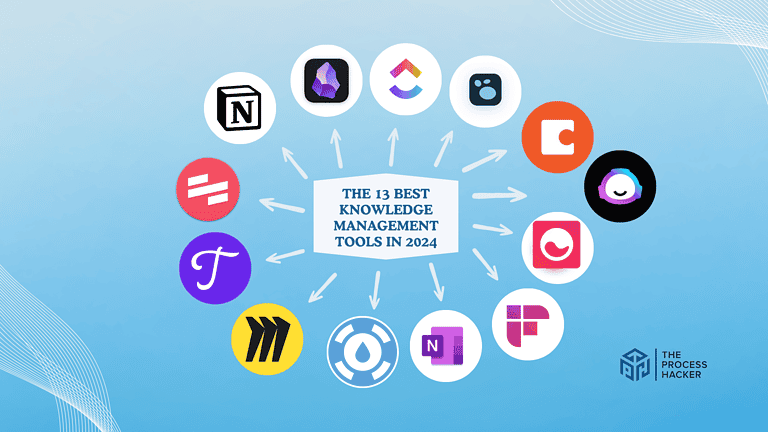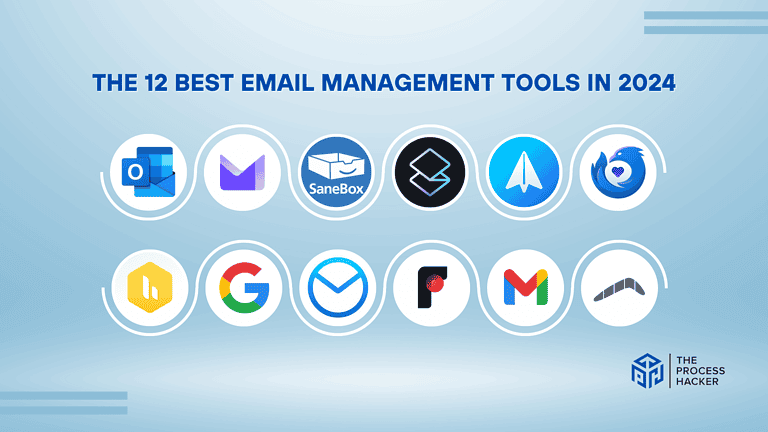Cloud FinOps: Master Financial Management in the Cloud Era
Are you tired of watching your cloud costs while your CFO is getting stressed out?
Welcome to the wild world of cloud computing, where costs can spiral out of control! But fear not; there’s a technology in town, and its name is Cloud FinOps.
Did you know that organizations waste an average of 30% of their cloud spend?
The cloud offers agility, scalability, and economic flexibility unmatched by traditional on-premises IT infrastructure. However, realizing the full benefits of the cloud depends greatly on how well your business can optimize its cloud spending.
But with Cloud FinOps, you can transform your financial management and become the master of your cloud domain.
Let’s dive into the money-saving, efficiency-boosting world of Cloud FinOps!
What is FinOps?
Cloud FinOps, short for “cloud financial operations,” is a set of practices, cultural philosophies, and technologies that enable organizations to maximize the value of their public cloud investments. It involves bringing together technology, business, and finance teams to collaborate on workload cost management and cloud budget oversight.
In simple terms, FinOps helps organizations:
- Gain visibility into cloud costs and usage
- Optimize resource allocation to reduce wastage
- Monitor expenditures against operational budgets
- Improve margins and profitability from cloud investments
The Emergence of FinOps as a Discipline
FinOps originated at Netflix, the streaming giant that pioneered this concept while migrating its infrastructure to the cloud. Faced with the challenge of managing AWS spending at scale, Netflix developed principles and best practices that eventually evolved into what we now know as FinOps.
The rise of FinOps consulting services also coincided with the formation of the FinOps Foundation in 2019. This body promotes best practices and standards for cloud financial management across industries. With prominent members like Atlassian, Autodesk, HSBC, Nationwide, and Spotify, the foundation is helping advance FinOps as a mature operational discipline.
Why is FinOps Important?
Why should you care about Cloud FinOps? According to IDC, worldwide enterprise spending on public cloud services will rise at a CAGR of 19%. 9% between 2024 and 2024, rising to $1.35 trillion. However, most businesses face challenges in estimating and effectively portioning their cloud budgets.
This leads to over-consumption of resources, underutilization of funds, and loss of potential savings – thereby negating ROI on cloud utilization. FinOps addresses these challenges in a variety of ways:
1. Visibility into Cost Drivers
FinOps tools provide granular visibility into consumption and spending across multiple cloud services and accounts. Organizations can identify top cost drivers and spots of overprovisioning.
2. Right-sizing and Usage Optimization
With detailed utilization data, the finance and business teams can choose the most cost-efficient service tier, instance type, and resource capacity for each workload. This ensures organizations pay for only what they truly need.
3. Budget Management
FinOps enables budget setting at micro and macro levels. Cost anomalies get auto-flagged for prompt intervention. Teams can also run accurate what-if projections for capacity planning.
4. Accountability Across Teams
With shared metrics, every engineer becomes an owner of cloud budgets. There is collective ownership of usage and costs. Application teams are incentivized to optimize based on their consumption.
The overarching goal of FinOps is to deliver positive cloud economics and prevent overspending through cultural and technological change.
What are the Benefits of FinOps?
In a way, FinOps is just doing whatever it takes to make cloud computing cheap. It is about helping engineers and product teams not to think very hard about making something fast, affordable, or good.
For companies that adopt FinOps principles and practices, the benefits can be multi-fold:
Reduced Cloud Waste
Up to 32% of cloud budgets are at risk of wastage, making effective cloud cost management critical for businesses.
Optimizing resource usage, right-sizing instances, eliminating idle capacity, and shutting off unneeded services minimize waste. Through active cost management, organizations can save between 25% and 40% in annual public cloud spending.
Improved Budgetary Control
Accurate cost forecasts, granular allocations, flexible budgets, and notifications for anomalies allow closer alignment to actual business needs. There are no budgetary surprises or cost overruns.
Higher Cloud ROI
FinOps minimizes the risk of overprovisioning and enables scaling cloud capacity based on real-time priorities. This allows for more cloud work with less spending and maximizes ROI.
Informed Technology Decisions
With complete visibility into consumption and costs across services, architectures, and resource types, organizations can make data-backed cloud adoption decisions.
Faster Innovation Velocity
Developers remain more productive on the features they want to build rather than dwelling on costs. It is designed so that application cross-functional teams can self-provision the cloud services they require without being constrained by financial controls.
FinOps is the lifeblood of today’s digital native businesses, the fuel that keeps the cloud migration and transformation engine running and the innovation engine humming.
How to Implement Cloud Financial Management
Ready to don your FinOps cape? Here’s how to get started:
- Build a Cloud FinOps Roadmap
- Create Cross-Functional FinOps Teams
- Invest in Essential Tools for Cloud Financial Management
Remember, implementing these practices requires strategic planning, executive mandate, technological capabilities, and cross-functional participation. It’s a team sport, after all!
Build a Cloud FinOps Roadmap: Key Components
Launching a FinOps practice involves putting in place several core elements:
FinOps Culture & Governance
FinOps is not just about tools and technology. It’s about people and processes. To build a thriving FinOps culture, you need:
- Cross-department committees: Bring together stakeholders from different departments to coordinate efforts.
- Defined policies, procedures, roles, and responsibilities: Establish clear guidelines for cloud usage.
- Integrated FinOps metrics into staff/team goal-setting: Align individual and team goals with overall FinOps objectives.
By embracing these practices, you can create a FinOps culture that empowers your teams to make informed decisions about cloud usage and drive better business outcomes.
Cloud Cost Monitoring
Cloud FinOps represents a paradigm shift in cloud financial management. Through proactive cost monitoring, organizations gain comprehensive visibility into their cloud spending patterns, enabling data-driven decision-making.
Consolidated views, detailed dashboards, and regular analysis empower businesses to identify and capitalize on optimization opportunities. This leads to improved resource allocation, cost reduction, and enhanced operational efficiency in the cloud environment.
Cost Allocation & Chargeback
Cloud FinOps isn’t just about saving money; it’s about understanding where your money goes. Cost allocation and chargeback models give you that transparency. With dynamic allocation rules based on actual resource usage, you’ll always have an accurate picture of your cloud costs.
This means application owners have the data they need to make informed decisions, leading to more efficient cloud usage across the board. It’s like giving everyone on your team a financial GPS for the cloud.
Budgeting & Forecasting
Budgeting and forecasting are your financial crystal ball in the cloud. By aligning flexible budgets with your product plans, you create a financial roadmap that evolves alongside your business goals.
Modeling and projection capabilities allow you to anticipate future costs. At the same time, real-time budget vs. actual tracking keeps you on the course, ensuring that your cloud investments deliver the maximum business value of cloud spending for every dollar spent. It’s like having a CFO dedicated to optimizing your cloud resources.
Optimization & Efficiency
Think of optimization and efficiency as your secret weapon in the cloud. By automating business processes to eliminate waste, you’re essentially putting your cloud on autopilot, freeing you up to focus on what matters most – your business.
With intelligent reservation planning based on actual usage, you’re not just saving money; you’re investing wisely in the resources you need when you need them. By continuously refining your resource sizing, you’re ensuring that your cloud environment is always running at peak performance. This is how you make the most of every cloud dollar.
Enablement & Communications
Empowerment through education and collaboration are the cornerstones of successful Cloud FinOps framework adoption. By investing in comprehensive FinOps training for your engineering and operations teams, you’re not just upskilling your workforce but fostering a culture of shared responsibility and financial accountability.
Establishing a community of practice where lessons learned are shared, and best practices are disseminated further solidifies this collaborative approach. And remember to celebrate your successes! Recognizing and rewarding efficiency wins reinforces positive behaviors, driving continuous improvement in your cloud financial management.
The right blend of these components helps instill FinOps thinking across the organizational culture.
Create Cross-Functional FinOps Teams
FinOps straddles technology, finance, and business domains. However, at its core, FinOps is a cultural transformation that requires company-wide adoption.
The key is dismantling the traditional siloed approach to cloud cost oversight. Centralized finance teams set the overall direction, but application developers and infrastructure owners also have a stake in the game.
This shared accountability and lateral communication ensures spending aligns better with operating priorities. It creates checks and balances to minimize inefficiencies while accelerating innovation.
When everyone can access cost insights and influence decisions, it catalyzes new ideas for being more cloud-smart with every release. Teams get creative about optimizing within guardrails and feel empowered to run cloud operations like a fast-growth startup.
Use Essential Tools for Cloud Financial Management
Cloud FinOps isn’t just a philosophy; it’s a practice, and like any practice, it requires the right tools. These tools aren’t just about number crunching. They give you the insights to make informed decisions about your cloud resources.
Think of them as your cloud financial advisors, helping you understand your spending patterns, identify areas for optimization, and forecast future costs.
By leveraging these tools, you can transform your cloud from a cost center into a value driver.
Optimizing Cloud Costs Across Providers
Cloud FinOps isn’t just about pinching pennies – it’s about smart spending. Here are some strategies for could cost optimization:
Strategies for Multi-Cloud Cost Reduction
Many businesses are embracing a multi-cloud approach. Yet, this doesn’t mean your expenses have to spiral out of control. The right strategies can turn your multi-cloud setup into a well-oiled machine, humming with efficiency and affordability.
- Unified Billing: Consolidate your billing across multiple providers. It’s like getting one bill for all your utilities – it’s easier to track your spending and identify areas where you can cut back.
- Cost Allocation: Assign costs to specific projects or departments. This is similar to tracking your expenses by category—you get a clear picture of where your money is going and can adjust your budget accordingly.
- Automation: Let technology do the heavy lifting for you. Set up automated alerts for unusual activity or when you’re approaching your budget limits. It’s like having a personal assistant who monitors your finances and warns you of potential problems.
Negotiating with Cloud Providers for Better Rates
Traditional budgeting methods can be rigid and inflexible, leading to overspending or missed opportunities. Instead, adopt a flexible budgeting framework that allows you to adapt to changing circumstances. It’s like having a budget that can breathe – it expands when needed and contracts when you don’t.
Leveraging Reserved Instances and Spot Pricing
Reserved instances and spot pricing are powerful tools for cost optimization. Reserved instances offer a discounted rate in exchange for a commitment to use a specific amount of resources for a set period. Spot pricing, on the other hand, allows you to bid on unused capacity at a significantly lower rate.
Imagine having a vigilant watchdog monitor your cloud spending and alert you to anomalies or potential cost overruns. That’s the power of automated policy enforcement. By setting up rules and alerts, you can proactively prevent wastage and keep your cloud costs in check.
Cloud Resources Utilization and Efficiency
Efficiency is the name of the game in Cloud FinOps. Here’s how to play:
Monitoring Cloud Resource Usage Effectively
To maximize efficiency, continuous monitoring of cloud costs and usage is crucial. This involves:
- Implementing Comprehensive Monitoring Tools: Utilize tools that provide real-time insights into cost and usage patterns. These tools help identify trends and anomalies, ensuring that nothing goes unnoticed.
- Setting Up Alerts and Notifications: Configure alerts for any unexpected spikes in usage or costs. Immediate notifications enable prompt action, which can prevent overspending and resource wastage.
- Analyzing Usage Reports Regularly: Regular analysis of detailed usage reports helps understand consumption patterns. This understanding is essential for making informed decisions about scaling resources up or down.
- Optimizing Resource Allocation: Allocate resources based on workload requirements, avoiding over-provisioning. This practice not only reduces costs but also ensures that resources are available when and where they are needed most.
Right-Sizing and Eliminating Idle Resources
To optimize your cloud investment, it’s essential to right-size and eliminate idle resources. Start by implementing granular cost allocation across departments, resources, and environments. This detailed approach allows you to see exactly where and how every dollar is spent, making it easier to identify underutilized or unnecessary resources.
By continuously adjusting these allocations and resources, you ensure that you’re not just spending smart but also running your operations at peak efficiency, aligning costs with actual usage and business needs. This proactive management is critical to maintaining a competitive edge in a cloud-driven marketplace.
Automating Resource Management for Cost Savings
One of the most effective strategies in Cloud FinOps is automating resource management. You can optimize resources based on real-time data and workload patterns by leveraging automation. This not only ensures you’re utilizing your cloud environment to its fullest potential but also significantly cuts down on wastage.
Automated tools can dynamically adjust resources, scaling them up during peak times and scaling down when demand drops. This responsive approach to resource management helps drastically reduce unnecessary spending, making your operations both cost-effective and performance-optimized.
Core FinOps Best Practices
FinOps rests on three main principles that guide the workforce, processes, and technologies required for successful adoption across teams:
Adopt a Service Culture
A cultural shift within your organization can be the key to unlocking the full potential of Cloud FinOps. The traditional “throw it over the wall” mentality, where development teams create applications and then hand them off to operations, simply doesn’t cut it in the cloud.
Instead, embrace a “You Build It, You Run It” approach. This means that application teams are fully accountable for the entire lifecycle of their applications, including the daily operational costs. This fosters a sense of ownership and encourages teams to make cost-conscious decisions from the very beginning.
By aligning cloud spending decisions with product priorities, you ensure that every dollar spent directly contributes to your business goals. This mindset shift promotes financial responsibility and drives innovation and collaboration across teams.
Think of it like this: instead of having two separate teams working in silos, you create a unified force that works together to achieve a common goal – maximizing the value of your cloud investments. This collaborative approach leads to better decision-making, faster problem-solving, and, ultimately, greater success in the cloud.
Emphasize Cost-Aware Engineering
Imagine a world where every engineer in your organization is acutely aware of the financial impact of their decisions. Where coding, testing, and deployment aren’t just about functionality but also about fiscal responsibility. This is the essence of cost-aware engineering, a cornerstone of Cloud FinOps.
By treating cloud budgets as a finite resource, just like CPU cycles or memory, engineers develop a “cost-aware muscle memory.” This means that cost considerations become integral to the development process, from the initial design phase to the final deployment.
Think of it this way: When building a house, you don’t just focus on aesthetics and functionality. You must also consider the cost of materials, labor, and permits. Similarly, in the cloud, engineers need to factor in the cost of computing, storage, and networking when designing and building applications.
This mindset shift doesn’t happen overnight. It requires a concerted effort from both management and engineers. But the payoff is significant. By embedding cost awareness into the engineering culture, you empower your teams to make smarter decisions that drive efficiency and cost savings.
Foster Open and Honest Communications
Centralized teams maintain overall visibility and help application teams optimize through open communications. There is no finger-pointing; successes and failures are shared to foster cohesion.
These cultural elements manifest into six core FinOps practices seen by cloud leaders:
- Continuous cloud cost and usage monitoring: Always stay on top of daily consumption to minimize surprises.
- Granular cost allocation: Attributing every dollar spent on the cloud to departments, resources, environments, etc.
- Flexible budgeting frameworks: Setting dynamic budgets that can be tweaked at any time based on priorities.
- Automated policy enforcement: Preventing wastage and cost spikes through threshold-based alerts, limits, or auto shutdowns.
- Resource optimization: Right-sizing usage based on data, workload patterns, and other signals.
- Cost efficiency prioritization: Making all technology and business decisions with their impact on cloud spending in perspective.
Implementing these practices requires strategic planning, executive mandate, technological capabilities, and cross-functional participation.
Challenges and Future Trends in Cloud FinOps
Overcoming Common Cloud FinOps Obstacles
One common hurdle is estimating and portioning cloud budgets. It’s like trying to predict the weather—there are many variables at play, and things can change quickly. However, with the right tools and strategies, you can forecast your cloud spending more accurately and allocate resources more effectively.
Think of it like planning a road trip. You need to estimate how much gas you’ll need, where you’ll stay, and what you’ll eat. Similarly, you need to assess your usage in the cloud, identify cost drivers, and allocate resources accordingly.
Emerging Technologies in Cloud Financial Management
The world of cloud computing is constantly evolving, and so is the field of Cloud FinOps. Exciting new technologies are emerging that can help you streamline your financial management processes and gain even deeper insights into your cloud spending.
One such trend is the integration of FinOps into cloud-native architectures. This means that financial management is baked into the very fabric of your cloud infrastructure, making it easier to track costs, optimize resources, and make informed decisions.
Preparing for the Next Generation of Cloud Economics
As the cloud continues to grow in complexity, so will the challenges of managing cloud finances. However, with the right preparation, you can position yourself for success in the next generation of cloud economics.
Final Thoughts on Cloud FinOps
While the adoption of cloud-native architectures is rapidly growing, FinOps must be integrated into the process at the level of architecture formation. These dynamic environments require greater granularity, real-time monitoring, and more stringent integration to address temporary structures.
However, when the right strategies are employed, which involve managing culture while embracing technology, FinOps provides great value. Teams can create and operate cloud-native environments without interference, and enterprises get the most out of cloud solutions.
FinOps also guarantees that the business can leverage the full potential of cloud-native innovation without the negatives of inefficient spending and lack of control. As the pace of cloud complexity increases, FinOps is now at the age when it fully blossoms in terms of managing cloud costs.







